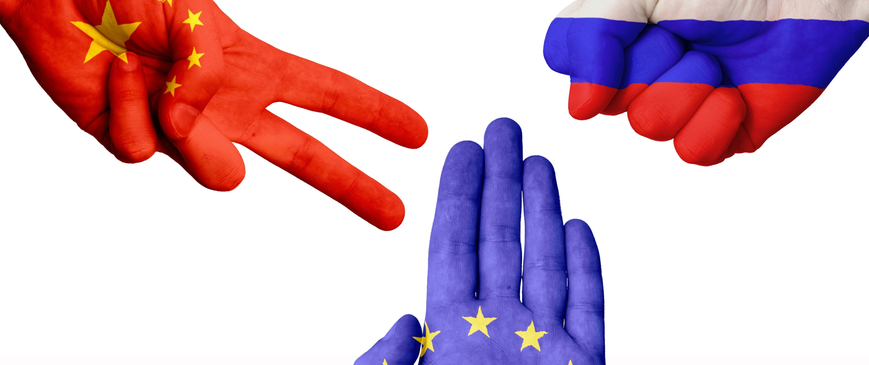
The EU, the Eurasian Economic Union and One Belt, One Road: Can they work together?
- There are three main integration projects in the Eurasian landmass: the European Union, the Eurasian Economic Union (EAEU) and China's 'One Belt, One Road' (OBOR) initiative. The EU is the largest economic bloc; the EAEU covers the largest area; OBOR covers the largest population.
- These three projects spring from very different motives. The European Union is an institution which uses economic interdependence to preserve the peace in a part of the world where major wars have been the norm in history, and to make Europeans richer and freer (albeit with mixed results). The Eurasian Economic Union is Russia’s latest attempt to reassemble as many as possible of the former Soviet states around itself, using economic leverage rather than military force. 'One Belt, One Road' serves a variety of purposes for China, including encouraging economic development in the west of the country and linking China to Europe by land as well as sea.
#EU, #EAEU & #OBOR: 3 integration projects geographically overlapping. Conflict or co-operation?
- Geographically, the three projects overlap, with OBOR having the largest coverage but the lightest institutional architecture. Historically, if great powers had overlapping spheres of influence there would almost certainly be conflict between them. There are risks in the current situation.
- But there is also an opportunity for the EU, EAEU and China to work together to avoid conflict and to look for synergies between their objectives. The EAEU and China have agreed to pursue convergence between OBOR and the EAEU; and the EU and China are major economic partners, and are looking for opportunities to work together in the countries involved in OBOR. The missing link is a relationship between the EAEU and the EU. The EU is rightly suspicious that the EAEU is more of a Russian geopolitical project than a genuine economic union between its members; but it should not dismiss it out of hand.
- Relationships within and between these initiatives could easily go wrong. There are tensions between the EU and Russia, including over Russia’s invasion of Ukraine and annexation of Crimea in 2014. There are tensions between countries along the 'Silk Road' from China to Europe. Russia is pursuing a strategic partnership with China at present, but their interests are not identical and nationalists on both sides occasionally voice suspicion or hostility to the other.
#EU can no longer be sure US will protect multilateral order, or see US interests as similar to EU’s
- But there may be scope for an innovative approach to diplomacy and economic co-operation across a huge expanse and for the benefit of an enormous population. The approach would have to be incremental, starting with modest objectives and aiming to build confidence among the parties gradually, given the differences among them.
- There are considerable obstacles in the way of working together. The EU is overwhelmed by internal and external challenges: the continuing problems of the eurozone; failure to control irregular migration from the Middle East and North Africa; tensions in the transatlantic relationship in the era of Donald Trump; and Russian mischief-making in EU countries as well as in Eastern Europe. Russia is economically weak (and will remain so as long as oil prices are relatively low), but compensating by being disruptive internationally, so that other powers are obliged to pay attention to it. China has proclaimed itself a champion of globalisation, but the playing field for foreign businesses in China is still far from level. The differences in values and political systems between the main powers in the region are enormous.
- Nonetheless, Europe can no longer be certain that the US will protect the multilateral order, or that the Trump administration will see America's interests in Europe and Asia as similar to those of the EU and its member-states. There are shared economic and security interests in Europe and Eurasia that the parties could pursue, albeit with no guarantee of finding common approaches. But it is better for Europeans to try to find some common ground with the former Soviet states and China than to watch passively as the existing order is replaced by something much more hostile to the EU's values and interests.
Copyright is held by the Centre for European Reform. You may not copy, reproduce, republish or circulate in any way the content from this publication except for your own personal and non-commercial use. Any other use requires the prior written permission of the Centre for European Reform.

